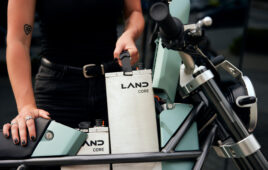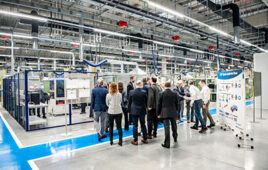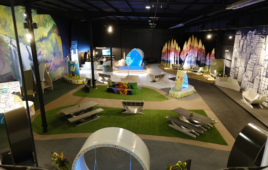
Material lightweighting for functionality could mean substituting aluminum instead of bronze for the thrust bearing of a large compressor.
What design engineer hasn’t wished that s/he could simply modify the surface properties of the metal they’re using to better fit the application? What once seemed like something from the realm of alchemists may now be a reality. The newly developed Micro Arc Oxidation (MAO) technology allows for the multifunctional modification of lightweight metals such as aluminum, titanium or magnesium. Surfaces can be designed for their desired functions and the performance of lightweight metal components are significantly improved. This allows for new functional and decorative applications—including in mass produced products—with significant reductions in weight, material and costs while maintaining or even improving functionality.
The Metaker MAO process modifies the outer layers of lightweight metals to form a strong, multifunctional atomic metal-ceramic bond. By adapting the process parameters, the material attributes (functionality) and their combination (multifunctionality) can be calibrated for specific applications.
The procedure is an electrochemical nanotechnological surface treatment for light metals such as aluminum, titanium and magnesium. It uses billions of microplasma discharges (micro arcs) to transform a 2- to 200-μm thick layer of the surface microstructure of a workpiece to a sealed, multifunctional, atomically fused metal-ceramic bond.

An example of a specific application. Cross section of a ca. 80 µm thick layer applied to the rounded edge (R=0.06 mm) of an aluminum workpiece (white in the image) with a variable microhardness of 894 HV (image below right) to 425 HV (image above right). The hard metal-ceramic bond strengthens and stiffens the thin aluminum component regardless of its geometric complexity. The image above left shows a SEM image of the surface topology.
This metal-ceramic bond creates a complex, heterogeneous, multi-functional and gradient material mix whose composition, structure, substance and properties vary from the interior to the surface of the product and can be adapted to specific applications. The ceramic substances used in the procedure are high-strength, high-pressure and high-temperature modifications of various oxides.
By using the Micro Arc Oxidation Process, alloys of aluminum, magnesium, titanium and water resistant material combinations with these alloys can be custom modified. The production process of the desired component as well as its geometric complexity are both irrelevant. Full functionality can be achieved with aluminum alloys with a silicon content of less than 10-12%. Alloys with a higher silicon content will face certain restrictions.
Double digit savings potential
This procedure allows for a range of mechanical, chemical, electrical, optical, haptic, biological, ecological and technological properties of lightweight metals to be modified on an industrial scale. It transforms the surface into a constructional element, which potentially opens new possibilities for the industrial application of lightweight metals. For example, double digit improvement can be achieved in weight reduction, product and processing costs, lifespan, and efficiency.
MAO surfaces have many potential uses for the implementation of lightweight metals in key industries. Applications include material substitution, functional integration, and hybrid lightweight design. In one instance, a manufacturer of high performance electric motors was able to replace a copper moving component with one made from aluminum. The implementation of the lighter material resulted in a cost reduction of 92% and a weight reduction of 72%, while at the same time improving functionality and increasing the lifespan of the product.
Billions of microplasma discharges form complex metal-ceramic bonds
The properties of the material can be controlled through changes to the various process parameters such as the electrolyte chemistry, electric current, voltage and discharge time. The surface and process properties offer truly unique features that provide unprecedented application potential as has been confirmed time and time again by researchers and industries.
“The newly developed combination of water-resistant material components such as plastics, steel or glass with modified aluminum components allows engineers to take new approaches in incremental and disruptive innovations,” said managing director Eugen Pfeifer. “If one were to choose for example a fiberglass reinforced plastic, the aluminum component can specifically modified prior to overmolding, to improve its resistance to corrosion and wear and to improve its surface structure for better bonding, and after overmolding modified again to further improve wear resistance.”
The nearly limitless possibilities to combine and alter materials as well as the adjustable geometric complexity of Metaker material hybrids create a foundation for developing new technical systems and processes.
Metaker
www.metaker.com
Lightweighting Baden-Wuerttemberg
www.leichtbau-bw.de/en
Filed Under: Green engineering • renewable energy • sustainability





Tell Us What You Think!